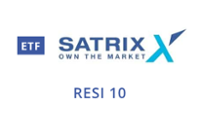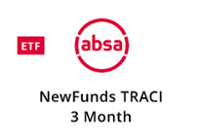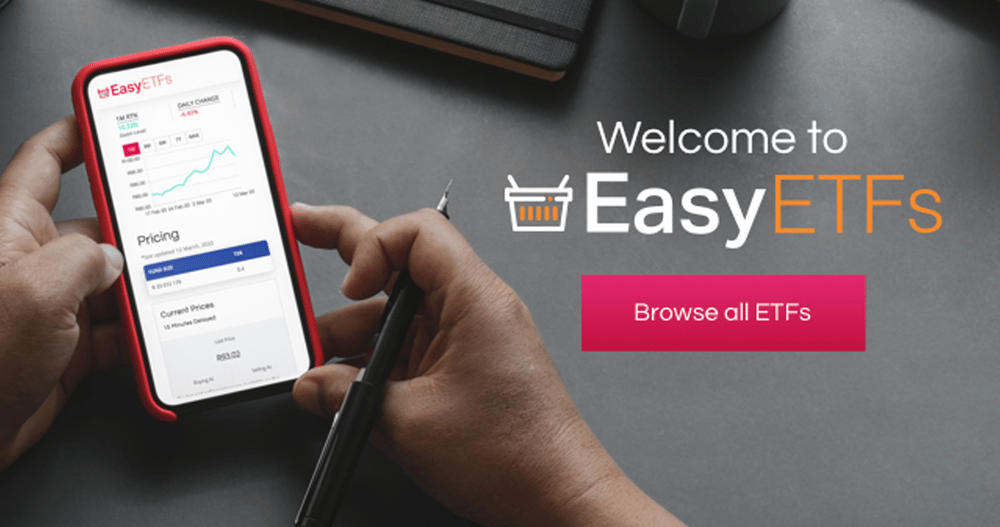Intellidex ETF Portfolio
Intellidex ETF Picks
This week Intellidex ETF portfolio is adapting to the rising inflation concerns globally while diversification remains a top priority as opportunities in the market present themselves.
The investment environment
Covid-19 remains the most important backdrop to any investing story both at home and globally. With the recovery uneven, the chasm between the haves and have-nots is becoming clear both in economic recovery and vaccinations.
Unfortunately, South Africa has done quite poorly on vaccinations, with only 0.6% of its population vaccinated, mostly healthcare workers. It ranks 151st, according to data tracked by Bloomberg, surprisingly behind countries such as Zimbabwe that has managed to inoculate about 1.8% of its population. However, on a positive note, following a two-week suspension, SA has resumed the vaccination of healthcare workers as part of the Sisonke implementation study.
What’s more, about 3.84-million vaccine doses from Pfizer are expected between May and June. Also, the first commercial batch of the Johnson & Johnson vaccine from Aspen’s plant in Gqeberha is now expected by mid-May. Health Minister Zweli Mkhize says SA is looking to secure additional vaccines from Russia and India. If this comes to fruition things could start looking quite different. We would be on a sustained path to fully reopening the economy, and this can only be good for both equity and other investments. Fears of a third wave in SA remain, with the Free State most at risk. However, there is anecdotal evidence, based on blood bank data samples, that about 63% of South Africans may have already acquired natural immunity, but implications of this are not yet fully understood and we remain cautiously optimistic. Nonetheless, SA remains one of the most blacklisted countries thanks to its highly infectious Covid variant.
Meanwhile, economic performance and indicators, on balance, are encouraging. Arguably the most positive metric for SA at this juncture is the state of our balance-of-payments (BOP) due to favourable terms-of-trade (ToT), driven by the strong commodity prices.
This bodes well for both the rand and government finances. Consequently, the government overshot revenue expectations while simultaneously underspending for fiscal year 2020/21, and as such the budget deficit is not as dire as feared. This is expected to continue into 2021/22, buttressed by the dissipating risk of government expenditure overrun on wages. We see the rand remaining strong in the near term, although the mid-term budget policy statement (MTBPS) in October is a real downside risk. The Absa Purchasing Managers’ Index (PMI) remains in positive or growth territory, but the latest weak private sector credit extension numbers are somewhat worrying, and we are afraid it might be signalling an ensuing credit squeeze/crunch.
Globally, recovery in developed markets is well under way, supported by vaccination efforts as well as strong economic stimulus responses. In the US, the latest economic data and company results support a strong recovery narrative which has birthed overheating and inflation fears. Similarly, economic prints in Europe and China are impressive. With PMIs firmly in the expansionary zone there is little doubt in most minds that the global economy is well on its way to recovery.
While inflation fears in the US and, by consequence globally, have some merit with the latest inflation prints showing a marked uptick, the US Federal Reserve thinks it is a fleeting phenomenon. Strong commodity prices are not helping to calm minds. However, there is dislocation with investors as longer-term higher inflation fears are growing. If the view pans out it could spell problems for emerging markets (EMs), specifically SA, which has a deteriorating outlook on its government debt.
Due to these inflation fears, global head of EMs research at HSBC, Murat Ulgen, says a survey by HSBC shows the number of investors bullish on EMs’ short-term prospects has fallen markedly to34% from three-quarters at the beginning of the year. And preference is investing in Asia with equities favoured over bonds. Furthermore, investors believe the commodity strength has not yet fully reflected in both economic and company performance numbers. With more stimulus plans on the cards relating to US infrastructure coupled with transitioning to a greener economy, global demand is looking up, particularly for commodities.
What’s aiding the commodity boom are supply chain disruption fears as producer countries, which are predominantly developing countries, are either underinvested or poor investment destinations, plus they remain at risk of future Covid waves given that their vaccination programmes are significantly behind.
So far, green policies in both the eurozone and China have been a major tailwind for commodities, and now with the US coming to the party this could see sustained strong demand. Bloomberg forecasts that demand for metals such as copper, lithium, iron, nickel and aluminium will grow more than 10 times in the next decade. However, the current global chip shortages could momentarily curtail progress. A big takeaway is that the outlook for miners remains positive.
The Intellidex favourites:
Domestic equity:
With inflation fears gathering steam globally, investors seem to be uneased with high equity valuations. While the US Federal Reserve has repeatedly promised an accommodative stance, investors think its hand will likely be forced when high inflation proves sticky. The diverging views by monetary authorities and investors is increasing market volatility and the idea of investing in a fund that minimises variability of returns is appealing in such circumstances.
The NewFunds Low Volatility Equity fund (+0.5% in April) exposes the investor to 20 JSE-listed securities that exhibit the lowest volatility (variability of a stock’s returns around its historical average) as well as a low beta (stock’s sensitivity to the overall market). The fund manager selects the twenty stocks with the lowest standard deviations and betas from a pool of the 60 most liquid JSE shares to form the portfolio and constituents are weighted by volatility.
The ETF is appropriate for investors who are risk-averse and might be inclined to panic during a market correction since it is likely to provide better downside protection and less eruptive when compared to the overall market. Even though they tend to lag in a strong market environment, they are expected to earn better risk-adjusted returns than the overall market over time.
Satrix RESI: We have already dedicated quite a chunk of this note to explain why commodities are primed for outperformance. Satrix RESI (+1.4%) is the only fund on the JSE giving investors unfettered access to mining companies listed on the JSE.
Foreign equity:
As you may have correctly guessed, the Sygnia S&P Global 1200 ESG fund, which comes with a decent price tag of 0.35%, down weights companies that score lowly on ESG and up weights those with better ESG metrics. As sustainability becomes more entrenched globally, it is only natural that investing is following suit, and it seems we are just at the beginning of this secular trend with companies on the right sight of ESG likely to attract capital and hence outperform peers for the foreseeable future. This newly launched fund by Sygnia is the most diversified ESG fund listed on the JSE.
The fund tracks the S&P Global 1200 ESG index, which is a subset of the S&P Global 1200 index, designed to measure the performance of securities meeting sustainability criteria while maintaining overall industry group weights as the S&P Global 1200 index. With the S&P Global 1200 index as its universe, the ESG index excludes companies that score low on United Nations Global Compact (UNGC) and S&P DJI ESG scores. Excluded companies are those that generate a considerable amount of revenue from coal, tobacco, and weapons. After the screening and exclusions, the ESG index contains roughly 63% of the S&P Global 1200 index constituents.
The S&P Global 1200 Index tracks a composite of seven headline indices: S&P 500 (US), S&P Europe 350, S&P TOPIX 150 (Japan), S&P/TSX 60 (Canada), S&P/ASX All Australian 50, S&P Asia 50 and S&P Latin America 40. The index, as the name implies, contains about 1,200 companies. EMs, mainly Asia and Latin America, make up 6% of the fund.
CoreShares Total World Stock Feeder: With the rand strengthening since the beginning of the year helped by favourable ToT, it is an opportunity to increase offshore holdings. SA’s outlook remains relatively uncertain and economic recovery slower given the painfully slow vaccination program. We have identified a newly listed fund that happens to be the most comprehensive and well-diversified fund on the South African market. It gives investors exposure to both developed (89%) and emerging (11%) markets in one shot, by tracking the FTSE Global All Cap Index containing over 9,000 large, mid-, and small-cap stocks spanning over 10 sectors across 49 different equity markets.
Bonds and cash funds:
While the debate on whether inflation poses near term risk rages globally, it is good practice to allocate a portion of your portfolio to inflation-indexed assets to guard against unforeseen inflation plus it enhances risk-adjusted returns to a portfolio of equities and nominal bonds.
The Satrix ILBI ETF (-1.3%) contains inflation-linked bonds whose principal value is regularly adjusted by the latest inflation rate measured by the consumer price index. So, the principal value rises over time, and simultaneously the investor receives a regular coupon payment (or interest) based on the adjusted principal value. While the coupon interest rate stays fixed, the interest paid on the rising inflation-adjusted principal value means that the rand value of the interest paid also rises over time. If inflation is expected to increase, prices will be bid upwards, and vice versa. A caveat, however, while inflation is a major driver of value, there are other market forces such as investors’ expectations of credit ratings. Thus, prices for ILBs fluctuate, reflecting investors’ perceptions of various drivers of value.
For short-term investors, usually less than a year, the NewFunds TRACI (+0.3%), which is a money market vehicle, is appropriate.
Click logos to view ETFs
Dividend & Income-themed funds:
Preference shares have surprisingly impressive after-tax dividend yields. The Coreshares Preftrax ETF (+7.3%) has historically outperformed bonds on an after-tax yield basis. The ETF carries plain preference stocks without exotic features, and its performance is similar to a debt instrument. It derives value primarily from its coupon rate (and dividend yield) relative to prevailing market interest rates. The coupon rate for most preferred shares on the market are referenced to the prime lending rate as such fluctuate with changes in the repo as set by the South African Reserve Bank.
The CoreShares PrefTrax fund is likely to appeal to high net worth, income-focused investors. In SA, a dividend withholding tax of 20% is paid on dividends earned from preference shares, giving them a tax advantage over bonds and money market instruments which are taxed at the marginal income tax rate of the taxpayer once the interest exemption of R23,800 (or R34,500 if the investor is older than 65) is used up.
Commodities:
We are bullish on the platinum group metals (PGMs) in the short to medium term, more so on rhodium and palladium. Last month we looked at the palladium fund and this month we turn our attention to rhodium. Prices have continued rising on the back of the global economic recovery; health and ESG policies, specifically in the eurozone and China; increased investment in renewable energy and electric vehicles; and disruptions in supply.SA, the world’s largest supplier of PGMs is battling production and volume difficulties due to electricity supply bottlenecks and policy uncertainty which has resulted in underinvestment. For instance, Anglo American Platinum, the world’s number two PGM supplier, experienced problems with its converter plant, taking up to 600,000oz of PGMs out of the market in 2020. The only rhodium fund on the market is 1nvest Rhodium ETF (+2.3%), which is backed by the physical commodity.
Click logos to view ETFs
Portfolio strategy
Against this backdrop, we believe investors should remain well diversified. With risks for SA and other EMs weighed to the downside due to slower vaccination rollout, investors will do well to have global asset exposure. Also, the strong rand improves the case for buying offshore assets. Historically, the bulk of the returns of offshore assets have been due to the weakening of the rand.
Although we are not yet worried about inflationary pressures locally, it is wise to hedge against the inflation risk should global inflation fears manifest. Also, the inflation fear has raised market volatility, highlighting the need to keep a portion of funds in assets that exhibit low volatility.
New to investing
and want to learn more about other Intellidex ETF picks?
Read: ETF Picks for the Investment Environment by Intellidex
Background: Exchange-traded funds (ETFs)
Exchange-traded funds (ETFs) are passively managed investment funds that track the performance of a basket of pre-determined assets. They are traded the same way as shares and the main difference is that whereas one share gives exposure to one company, an ETF gives exposure to numerous companies in a single transaction. ETFs can be traded through your broker in the same way as shares, say, on the EasyEquities platform. In addition, they qualify for the tax-free savings account, where both capital and income gains accumulate tax free.
Benefits of ETFs
- Gain instant exposure to various underlying shares or bonds in one transaction
- They diversify risk because a single ETF holds various shares
- They are cost-effective
- They are liquid – it is usually easy to find a buyer or seller and they trade just like shares
- High transparency through daily published index constituents
Disclaimer
This research report was issued by Intellidex (Pty) Ltd. Intellidex aims to deliver impartial and objective assessments of securities, companies or other subjects. This document is issued for information purposes only and is not an offer to purchase or sell investments or related financial instruments. Individuals should undertake their own analysis and/or seek professional advice based on their specific needs before purchasing or selling investments. The information contained in this report is based on sources that Intellidex believes to be reliable, but Intellidex makes no representations or warranties regarding the completeness, accuracy or reliability of any information, facts, estimates, forecasts or opinions contained in this document. The information, opinions, estimates, assumptions, target prices and forecasts could change at any time without prior notice. Intellidex is under no obligation to inform any recipient of this document of any such changes. Intellidex, its directors, officers, staff, agents or associates shall have no liability for any loss or damage of any nature arising from the use of this document.
Remuneration
The opinions or recommendations contained in this report represent the true views of the analyst(s) responsible for preparing the report. The analyst’s remuneration is not affected by the opinions or recommendations contained in this report, although his/her remuneration may be affected by the overall quality of their research, feedback from clients and the financial performance of Intellidex (Pty) Ltd.
Intellidex staff may hold positions in financial instruments or derivatives thereof which are discussed in this document. Trades by staff are subject to Intellidex’s code of conduct which can be obtained by emailing mail@intellidex.coza.
Intellidex may also have, or be seeking to have, a consulting or other professional relationship with the companies mentioned in this report.
Subscribe To Our Research Portal
Search all research
Let Us Help You, Help Yourself
From how-to’s to whos-whos you’ll find a bunch of interesting and helpful stuff in our collection of videos. Our knowledge base is jam packed with answers to all the questions you can think of.








